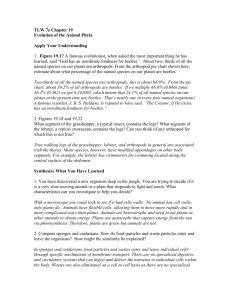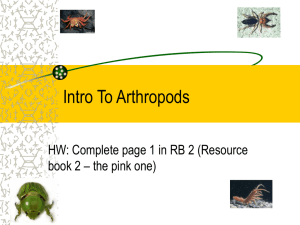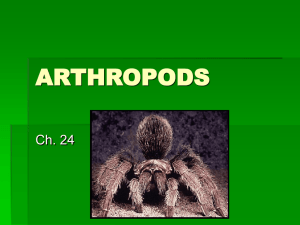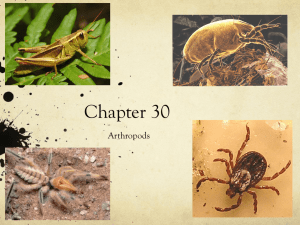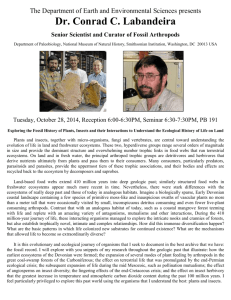Matthew L - Hinsdale South High School
advertisement
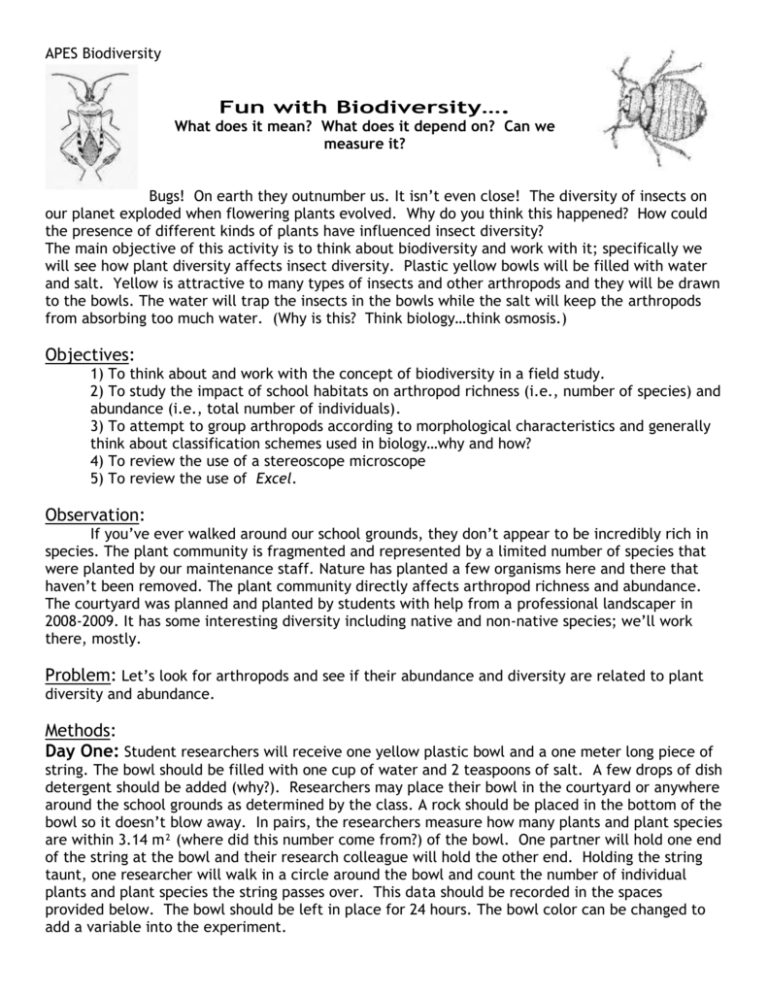
APES Biodiversity Fun with Biodiversity…. What does it mean? What does it depend on? Can we measure it? Bugs! On earth they outnumber us. It isn’t even close! The diversity of insects on our planet exploded when flowering plants evolved. Why do you think this happened? How could the presence of different kinds of plants have influenced insect diversity? The main objective of this activity is to think about biodiversity and work with it; specifically we will see how plant diversity affects insect diversity. Plastic yellow bowls will be filled with water and salt. Yellow is attractive to many types of insects and other arthropods and they will be drawn to the bowls. The water will trap the insects in the bowls while the salt will keep the arthropods from absorbing too much water. (Why is this? Think biology…think osmosis.) Objectives: 1) To think about and work with the concept of biodiversity in a field study. 2) To study the impact of school habitats on arthropod richness (i.e., number of species) and abundance (i.e., total number of individuals). 3) To attempt to group arthropods according to morphological characteristics and generally think about classification schemes used in biology…why and how? 4) To review the use of a stereoscope microscope 5) To review the use of Excel. Observation: If you’ve ever walked around our school grounds, they don’t appear to be incredibly rich in species. The plant community is fragmented and represented by a limited number of species that were planted by our maintenance staff. Nature has planted a few organisms here and there that haven’t been removed. The plant community directly affects arthropod richness and abundance. The courtyard was planned and planted by students with help from a professional landscaper in 2008-2009. It has some interesting diversity including native and non-native species; we’ll work there, mostly. Problem: Let’s look for arthropods and see if their abundance and diversity are related to plant diversity and abundance. Methods: Day One: Student researchers will receive one yellow plastic bowl and a one meter long piece of string. The bowl should be filled with one cup of water and 2 teaspoons of salt. A few drops of dish detergent should be added (why?). Researchers may place their bowl in the courtyard or anywhere around the school grounds as determined by the class. A rock should be placed in the bottom of the bowl so it doesn’t blow away. In pairs, the researchers measure how many plants and plant species are within 3.14 m² (where did this number come from?) of the bowl. One partner will hold one end of the string at the bowl and their research colleague will hold the other end. Holding the string taunt, one researcher will walk in a circle around the bowl and count the number of individual plants and plant species the string passes over. This data should be recorded in the spaces provided below. The bowl should be left in place for 24 hours. The bowl color can be changed to add a variable into the experiment. Day Two: After 24 hours, the researchers pour the contents of the yellow bowl into a beaker and bring it indoors for analysis. INDOORS: Pour a small amount of sample into a Petri dish. Using a stereoscope microscope, study the specimen you have collected. Group the arthropods into major groups based on morphology; i.e. insects with two wings are flies (Order Diptera), insects with four wings may be bees (Order Hymenoptera), insects with no wings may be springtails (Order Collembola) or ants (Order Hymenoptera), and non-insects may be spiders (Order Araneae) or harvestmen (Order Opiliones). Count the number of arthropods in each major group and record the number of arthropod species and total number of arthropods. If you are interested in identifying your insects, see the teacher for help (you can use field guides and the internet). Enter your class data into Excel and the class will create a figure showing the richness and abundance of arthropods versus plant abundance. Calculate the biodiversity index for your sample. _________________________________ Discussion: What do the data say about arthropod specie richness and abundance as related to plant species and abundance on our school grounds? Which arthropod orders are most attracted to yellow bowls in school environments? What types of biodiversity indecies did students obtain? Comment on the biodiversity of our school grounds. Data and Observations Day One Describe the location of your bowl. How many different kinds of plants are there? Give some names if you can identify any of them. Day Two How many insects did you collect? What Orders were represented? How many in each order? Sketch an insect you collected on separate paper. adapted from Matthew L. Richardson, UIUC,2006 drawings from: www.entomology.cornell.edu/Extension/DiagnosticLab How many total plants are there?
